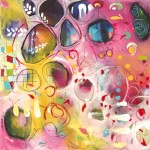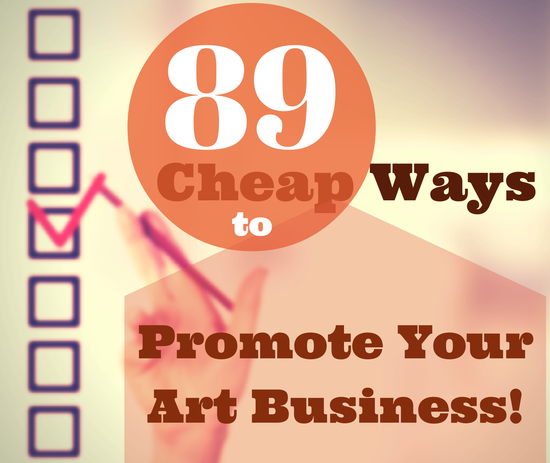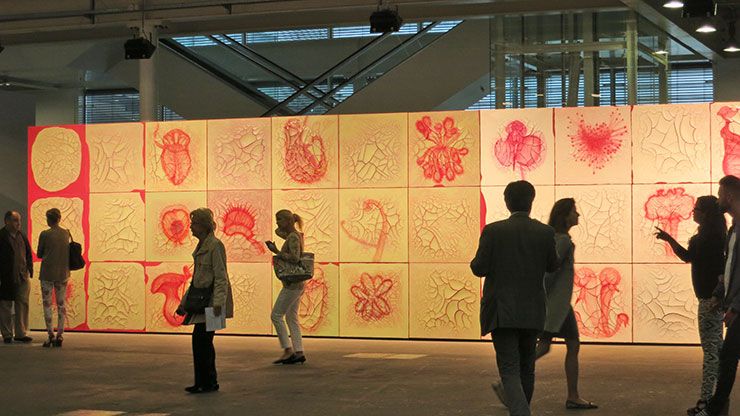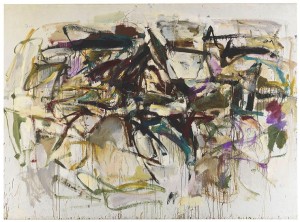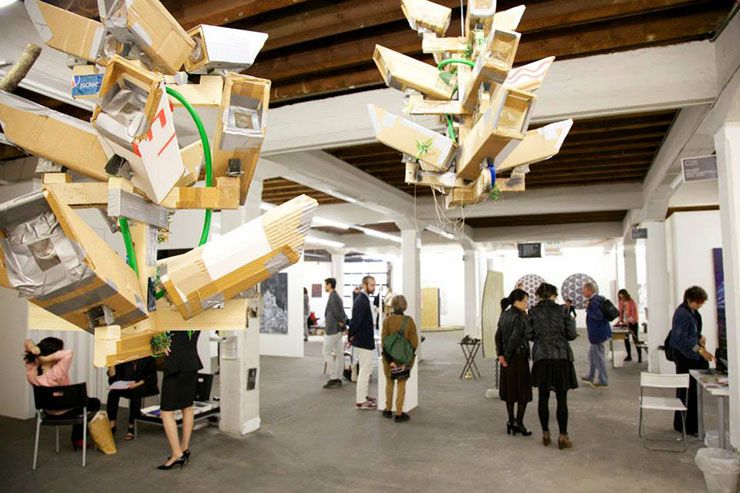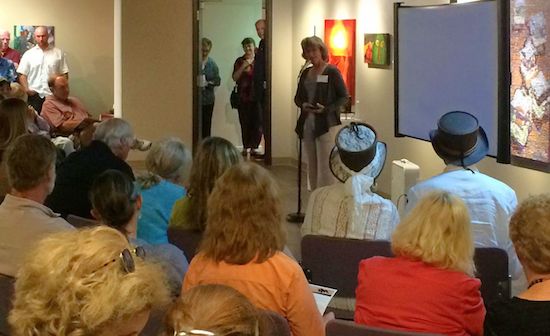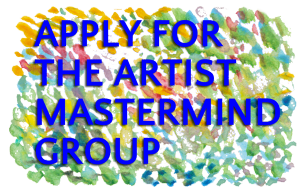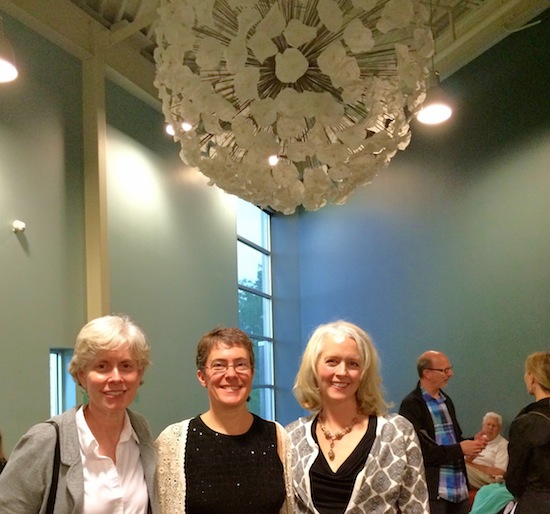How one successful artist uses a backstory.
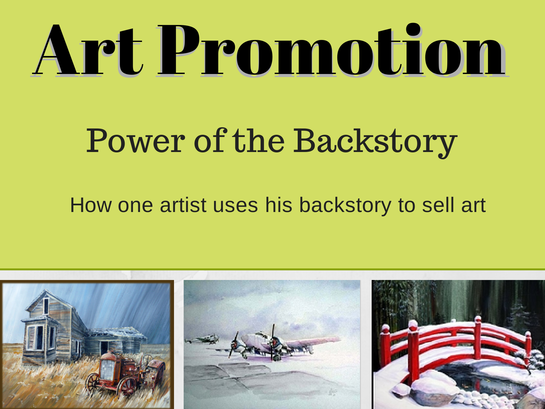 A few weeks back, I published post titled, “Selling Art with a Back Story.” It was influenced by how back stories are used to sell multi-million dollar high-end contemporary art, and how everyday artists can use the same techniques. Today’s guest post is from artist, Gregory Peters. He shares his insights on how using his backstory helps him sell his art.
A few weeks back, I published post titled, “Selling Art with a Back Story.” It was influenced by how back stories are used to sell multi-million dollar high-end contemporary art, and how everyday artists can use the same techniques. Today’s guest post is from artist, Gregory Peters. He shares his insights on how using his backstory helps him sell his art.
Everyone loves a good story. A “backstory” ideally is a great story. It’s your story; the story of why you create the kind of art you do. Your admiring public is eager to know more about you and your art. A well-constructed backstory causes potential customers take interest in you and buy your artwork. Joe Girard, one of the top salespersons of all time, once said that customers did not buy his products. Rather, they bought him. His story lent credibility to his pitch. He never felt he had to sell anything, as he merely sold himself.
You Need a Story to Tell
You become more credible, real, and certainly more interesting if others know your story. This is why you need a story to tell. I know you have one. We all do, especially artists.
My name is Gregory Peters. Like many of you, I am an artist who is also a writer. As an artist, a painter principally, I went through a number of stages of creativity to ultimately end up painting what I do. Along the very long and winding road of creative realization, I was constantly asked why I created the type of artwork I did. For many artists, there often is not an easy answer. There are reasons why the public seeks answers to the questions.
Not everyone has the “gift” of insight to see beyond the artwork in front of him or her and capture the vision of the artist. This is especially true with abstract works of art. Providing the answer may just earn a glassy-eyed stare and a few semi-knowing nods, but at least it is in part an answer to some of the deeper questions behind the query.
A great story can also fire the imagination of potential buyers and fuel their interest in your work. Learning answers to such questions as, “Who are you as an artist?” ” Why should I be interested in you or what you produce?” and “What can I tell my friends about this or you?” greatly helps to positively influence buying decisions.
As Your Art Evolves, So Does Your Backstory
In my case, I found myself producing progressively more “dimensional” artworks with mixed media and over time, the art was speaking to people in a language they’d never experienced. This is partly why my art website is called the DimensionalCanvas.com. The language of light and shadow and themes stretching from Koi fish to the wine country and Country/Western depicted in a semi-realistic manner with embellishments are not and never have been mainstream art. Most of my artworks are straightforward, but some are different in subtle ways. People sense this when they have my art in front of them and in most cases, they want to know more. So, they ask questions when they get a chance to actually talk with me such as at a festival or show. “What made you paint this?” “Is this something special to you?” There are of course many more questions, and I welcome them.
Asking questions is the perfect opportunity to engage with your audience. It not only helps define the answer, but also provides a platform to use your charm and wit and sparkling personality to help sell the artwork. Ideally, your backstory helps your potential customer to understand your art. It helps them to know and understand you, and to discover what drives your inspiration. Such insights are fascinating to those who do not create art.
Pictures and Words Tell the Story

- Fenceline – Gregory Peters
The backstory is best told in words and pictures. Not coincidentally, these are the two predominant means of communication. The story of you and your art is usually a progressive chain of events that happen over time. My art for instance was driven by the fact that I grew up overseas, developed interests in a wide range of subject matter relative to my experiences (vintage aircraft, landscapes, koi, seascapes, abandoned automobiles, etc.), and thus have a story to depict that stretches over a long period of time and utilizes many types of media such as paper, acrylics, wood, foliage and more.
One of my artworks depicts an old fencepost I saw in West Texas with rusty barbed wire wrapped around it. To achieve the proper scale on this “3-dimensional” picture, I actually had to handcraft that barbed wire, as they do not make it in such a small scale. “Fenceline” thus has a very interesting story behind it and one in which I am able to talk in depth about my skill as both a painter and sculptor at times. That is a small example of the “backstory.”
You can tell your story in the same manner using time, location or circumstance as your mantra. No artist is born creating saleable art from a very young age. It takes time to develop your skill set and learn how to promote it. Those, my friends are the foundations for a story.
The Growth of Inbound Marketing
I’d like to diverge for a minute and define something you may not be aware of. Inbound versus outbound marketing. I do this in answer to the question you’ll probably ask yourself which is, “How do I apply my backstory to help promote my art?”
The days of outbound marketing are pretty much over. Outbound marketing is where a company (or artist), buys ads, or sends to direct mail lists, and then prays for leads to take an interest. It’s a bit like pointing a shotgun into the air and hoping to hit a duck. Since about 2006, inbound marketing has been the most successful form for attracting customers. Inbound marketing consists of creating quality content (words and pictures), aligned with people’s interests, focused communication-based upon stages of life people may be at, personalized messaging directed to those who are interested and thus pulled toward your product, then diverse communication through vehicles such as blogs, newsletters, keywords and other forms of social media such as Facebook, Twitter, etc..
You as an artist want to attract people who have similar interests and thus be able to start a dialogue with them to enhance their interest, and get to know not only your art but also you as an artist. That is where your backstory comes in.
Incorporating Your Story
Use your story in blogs, newsletters, your bio, promotional appearances, collateral material such as brochures and flyers, even your elevator speech. It’s up to you to define your story and refine it over and over until it rolls off your tongue and into the minds of your engaged audience. Your backstory is merely an expanded version of the primary story that is you.
When people are in a position to buy something, they will weigh features versus benefits before making a buying decision. Most often, benefits will rule the decision. What will this do for me? How will I feel about it? Will it improve my life? Artwork, let’s face it, is a want, not a need. As such, the wants must be very compelling to outweigh the need issues.
Emotions Help Sell Art, So Do Backstories
Intense emotional wants will outweigh needs every time. Your backstory enhances and strengthens an emotional desire to own your work. At its best, a great backstory is transformative because it makes collectors feel they are buying a part of you and your story. Yes, that’s right. Your artwork is not some inanimate object; it is part of what makes you who you are as an artist. You know how you feel when emotionally involved in a particular piece. It’s like one of your children. It’s sometimes hard to part with even at an exorbitant price. Learn to use the power of your emotion to tap into that of your potential buyer. What happens is their buy-in and motivation to own your work becomes driven by a desire to be part of your story. The story of you (insert name here), artist.
I can’t tell you the many times I’ve received positive comments from satisfied customers who express how a particular piece of art has solved a perceived need they felt. The artwork filled a void, it met a lifelong wish, it was the perfect gift, it makes them feel good, and it covered up a crack in the wall. Their happiness and sense of satisfaction is just another chapter in my story.
I believe at this point you can see the many benefits to having your backstory become more prominent in your promotional “toolkit” as an artist. Your story has innumerable uses for promotion. It affords you the opportunity to connect with your collectors in ways that are not possible otherwise. Your story lends authenticity and credibility to what you do and who you are.
Word-of Mouth Advertising – a Backstory Byproduct
Ultimately, more customers and would-be customers will tell others about you and word-of-mouth, the best and cheapest form of advertising, will allow you to capture attention and convert that interest into collectors who buy your artworks. So get your story down pat, then use it on your website, blog and promo materials to spread your story!
Writing is not always an easy thing for artists to do, especially about themselves and their work. For artists who are not up to the task, a competent copywriter can craft a story using your background notes and by conversing with you. You will put on the final changes by adding appropriate images to the words. As a successful copywriter and artist, I know writing powerfully about you and your art often is challenging and demanding. As such, I’d be delighted to help you create a compelling backstory, or fulfill other copywriting tasks, for a small investment.
I find when writing blogs for companies that while they may know their products very well; they often do not how to talk about them in an interesting manner. In your case, you are the product. Whether you choose to utilize my services or find a writer in your area, I recommend you start by making quiet time to dream, and explore about you, your history, your art and how it is created. The point is to come up with a tale intertwined with all those things. including your skills and experiences. When you put a great attention-grabbing story and offer it up using the inbound marketing tools mentioned above, you will find the public is always eager to hear and hungry for a tale well told.
Who knows what that tale may be? Only you and the images you create.
Gregory Peters writes about and produces fine art. He is a published author and copywriter. View his artwork at DimensionalCanvas.com. His copywriting website is GregoryCanWrite.com. Contact him at Gregory@dimensionalcanvas.com

Some links in the post may be “affiliate links.” This means if you click on the link and purchase the item, we will receive an affiliate commission. Regardless, we only recommend products or services we believe will add value to our readers.









